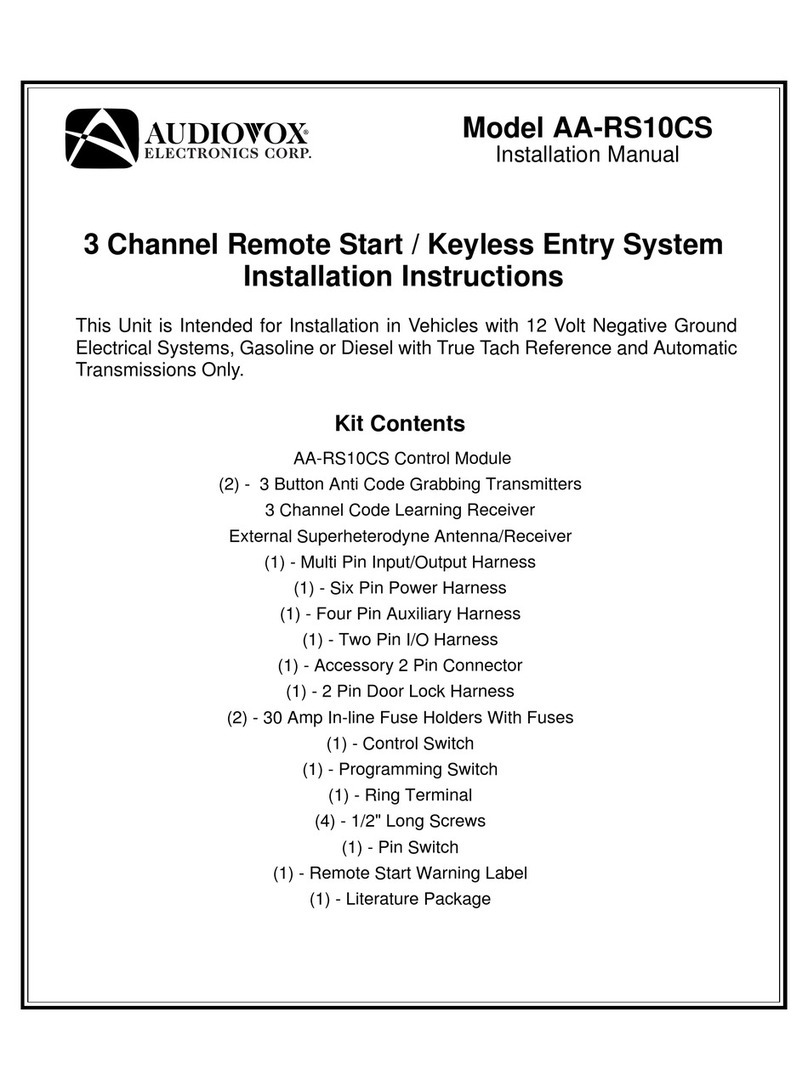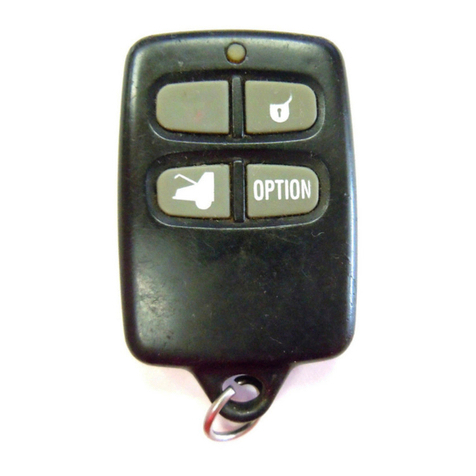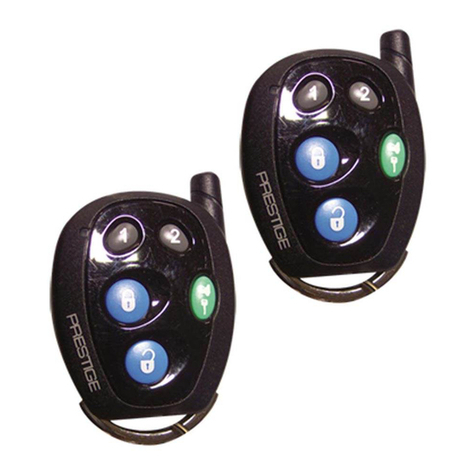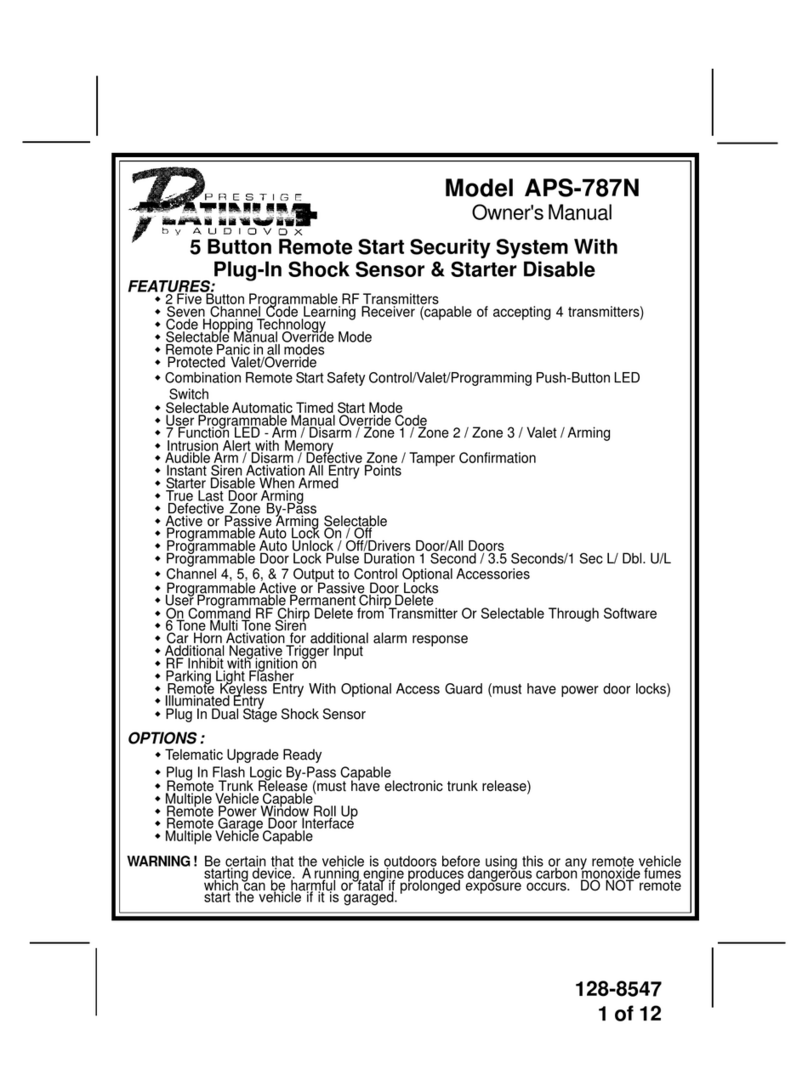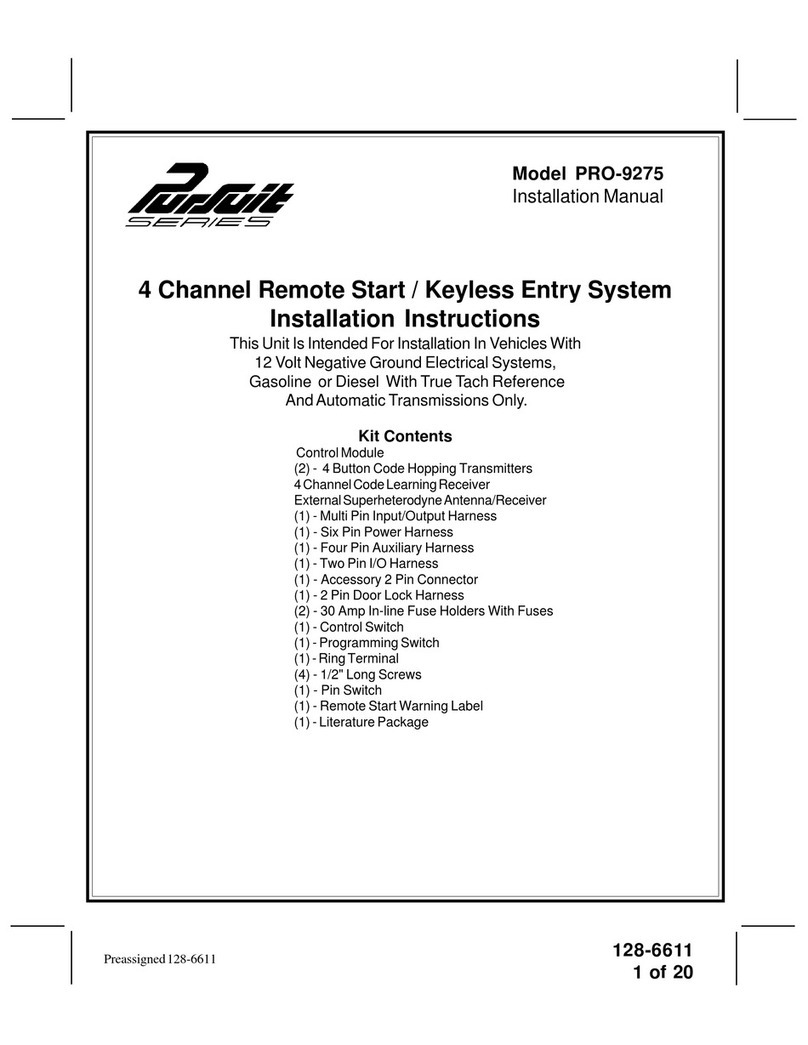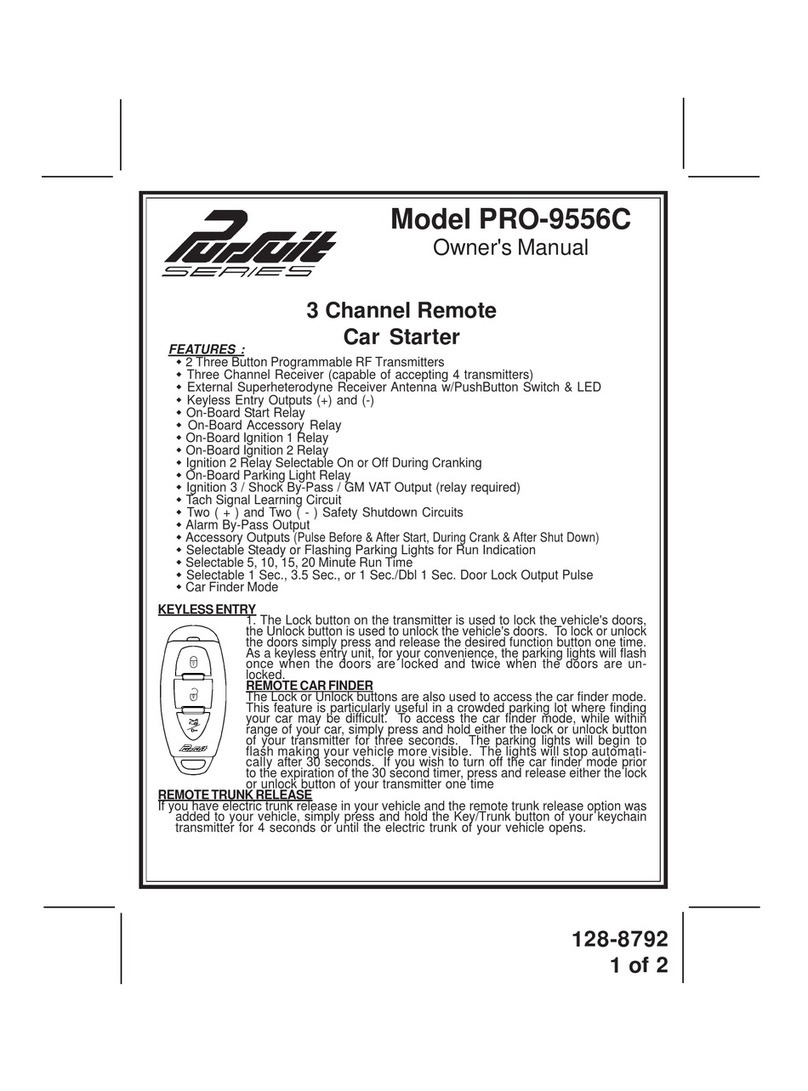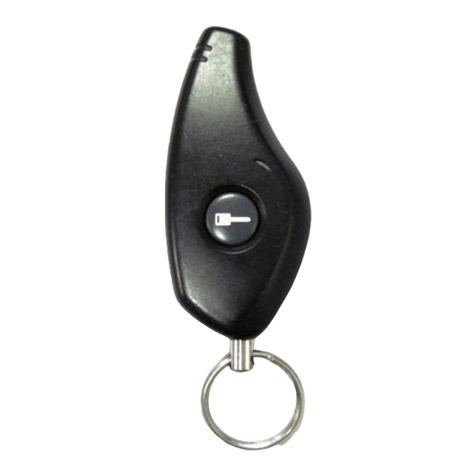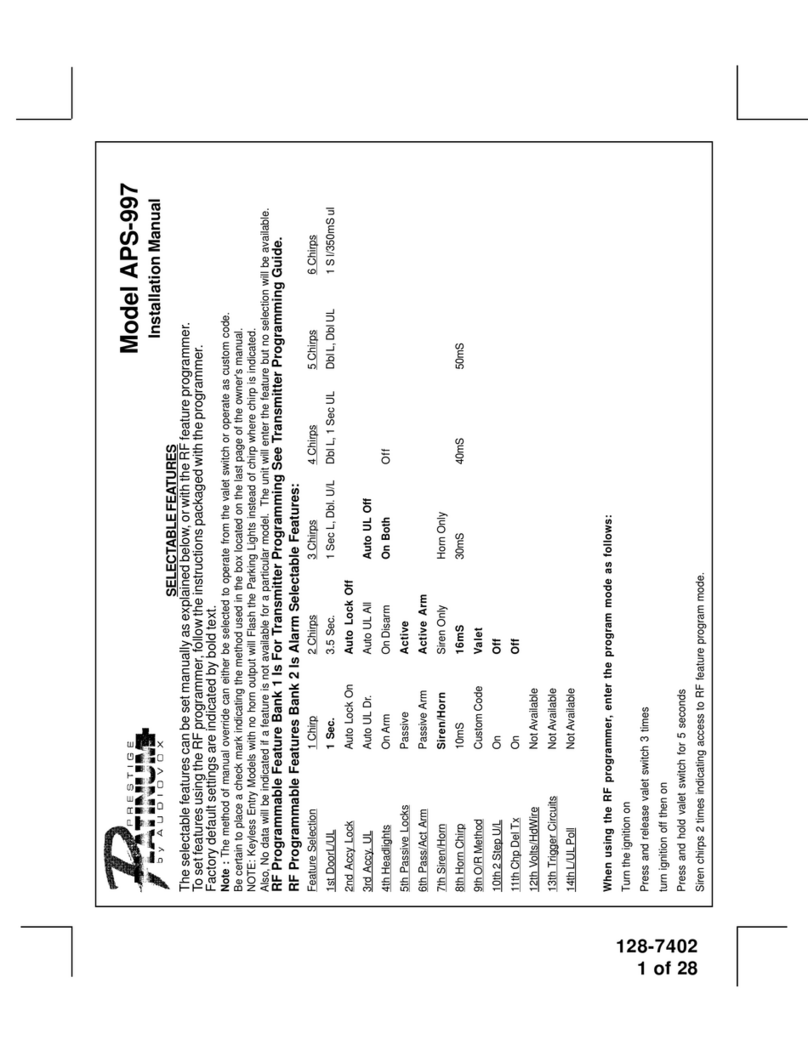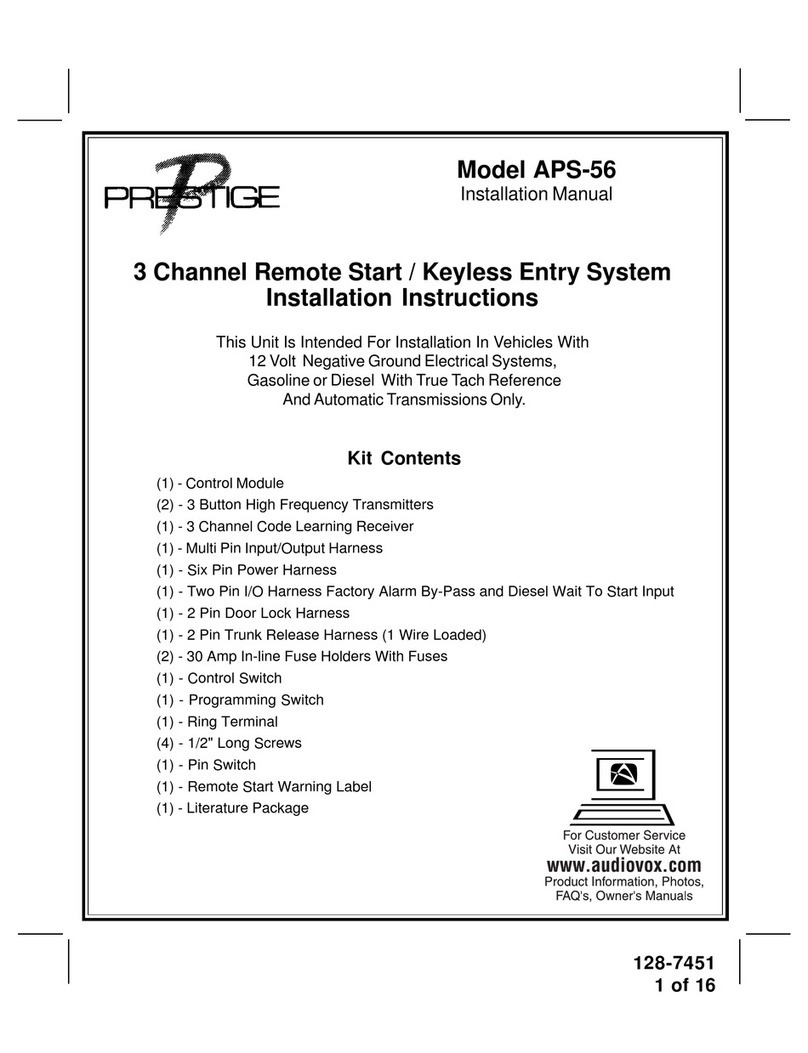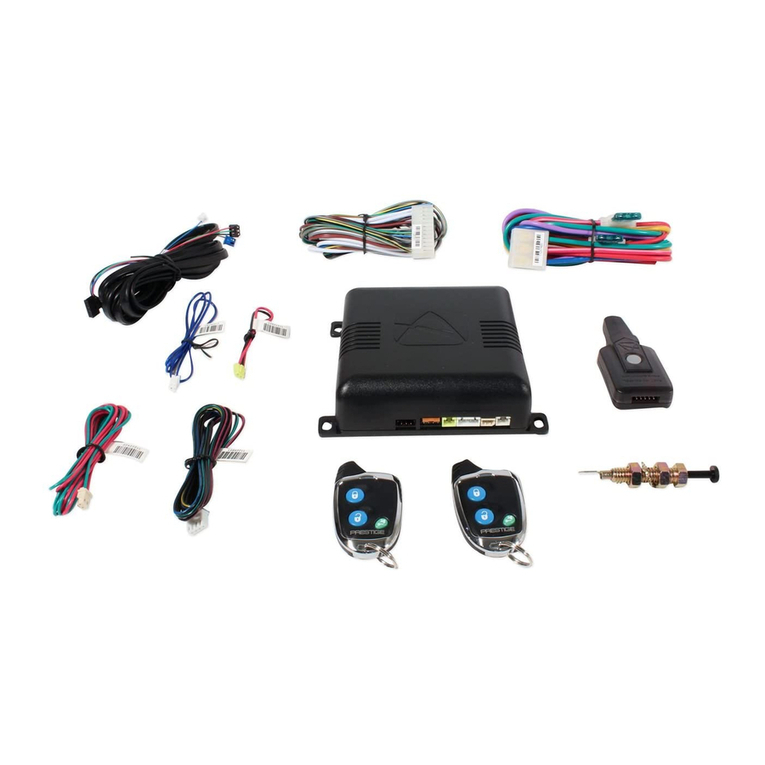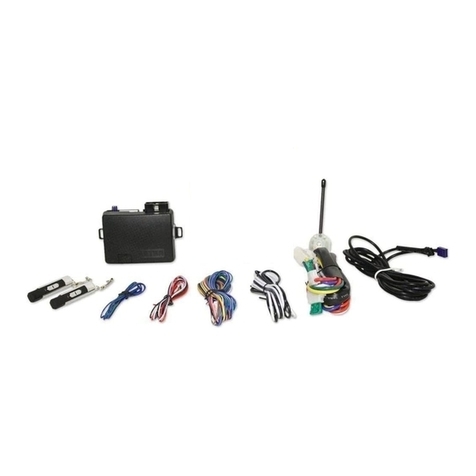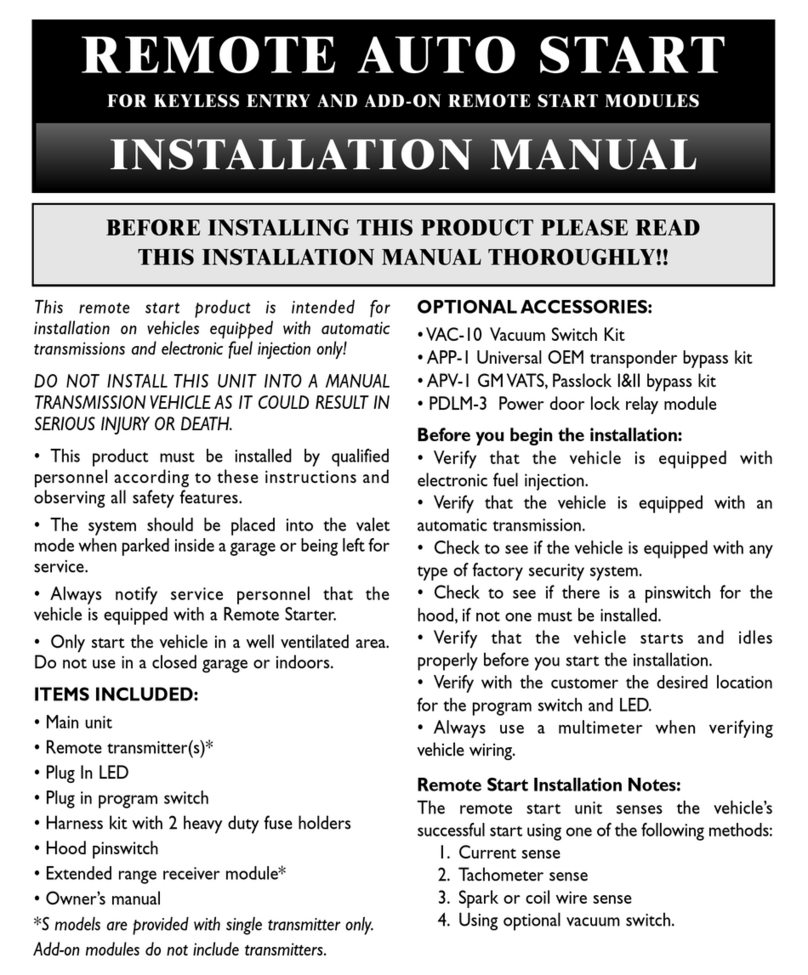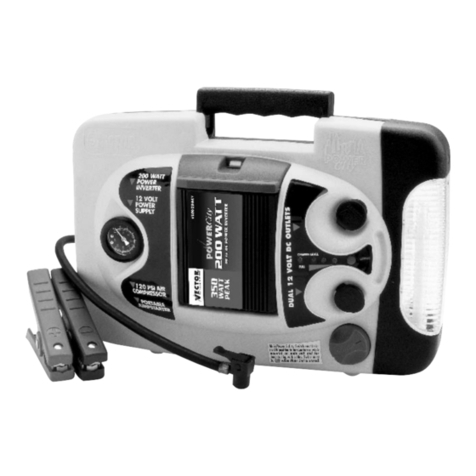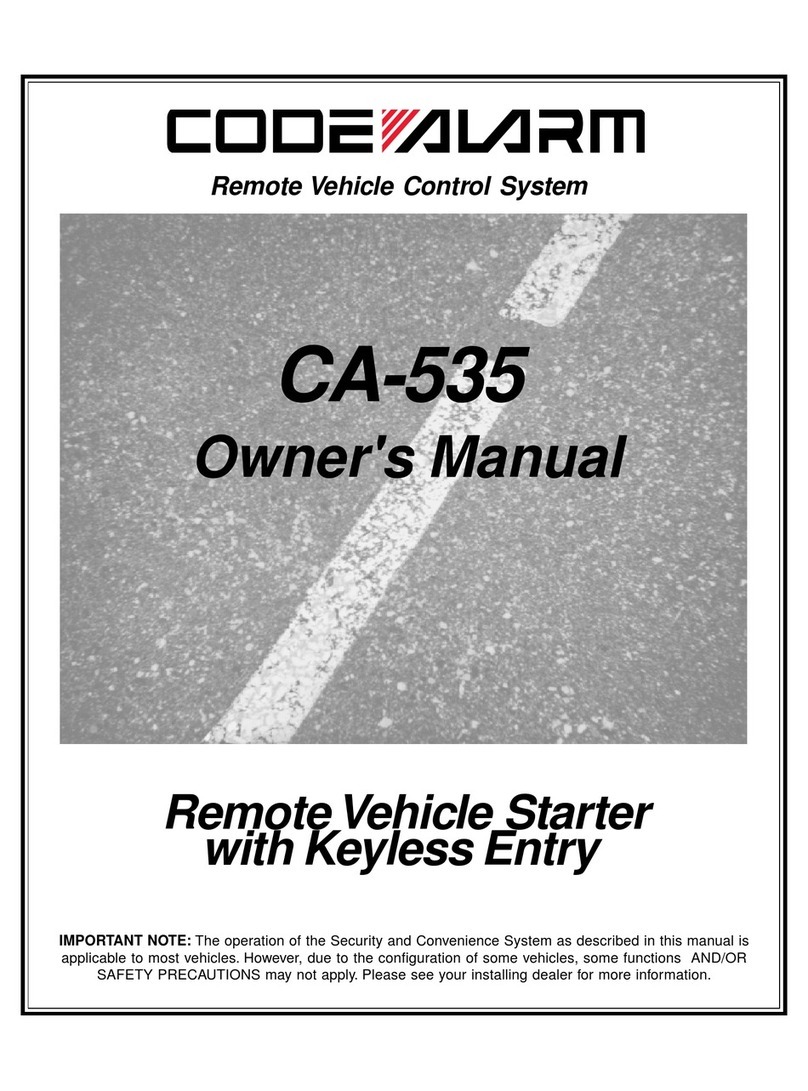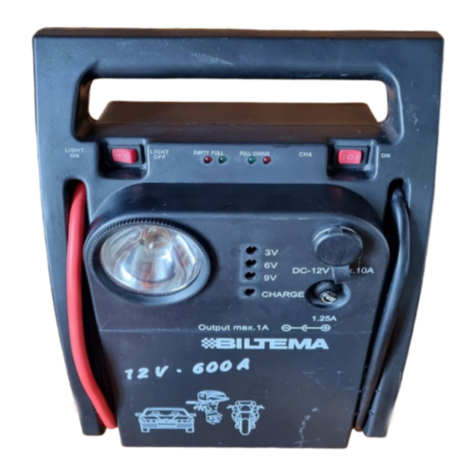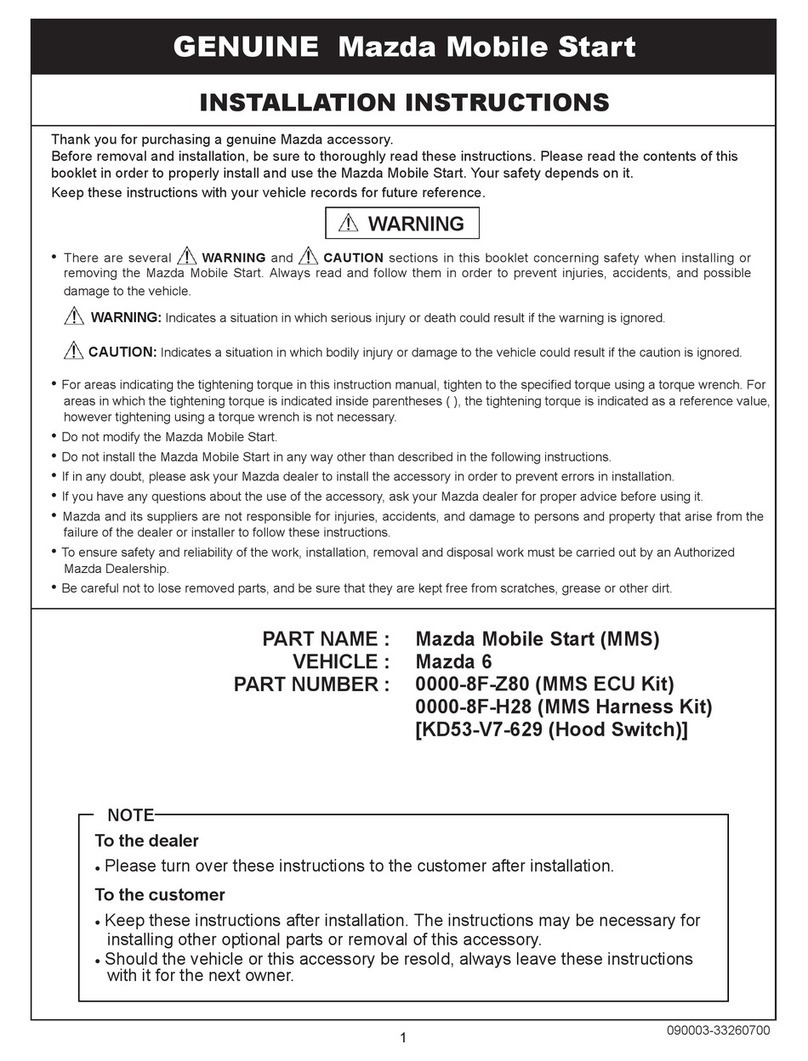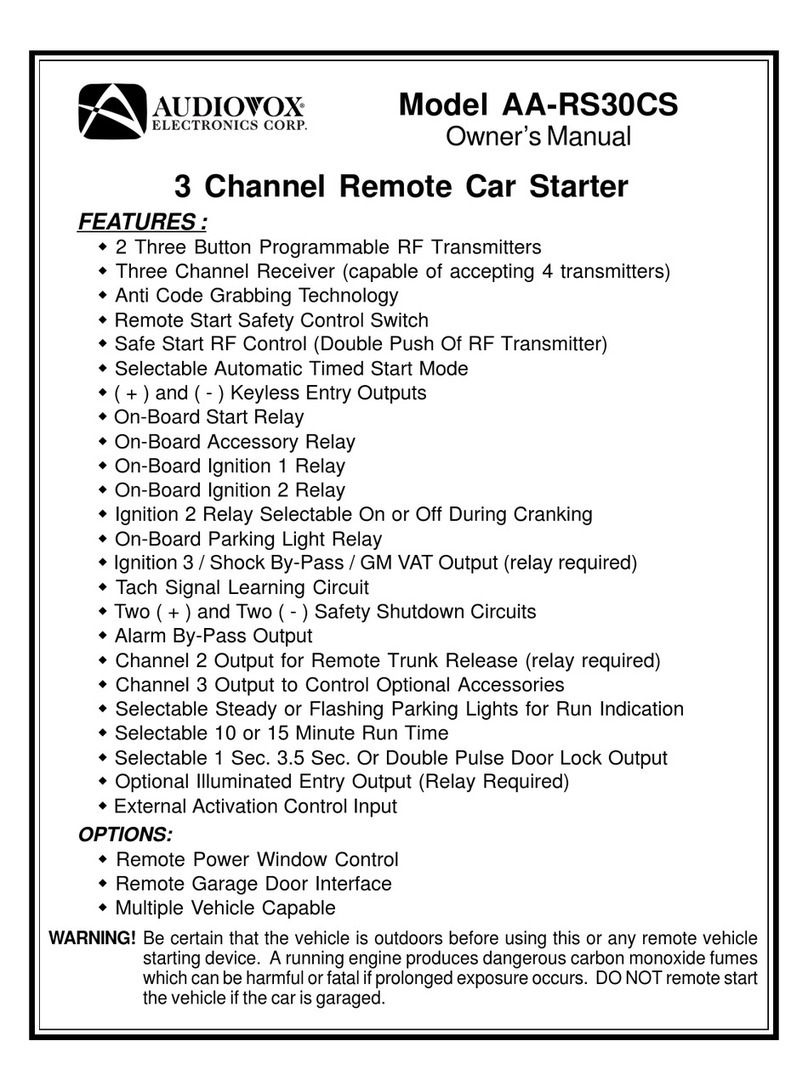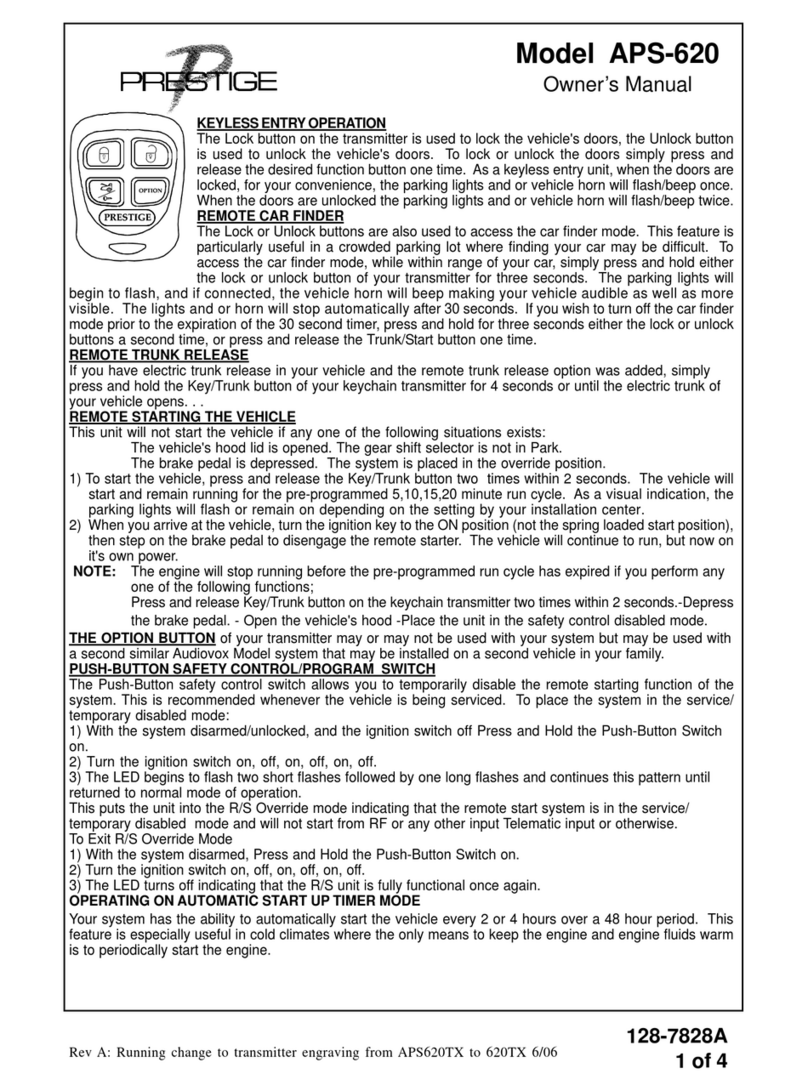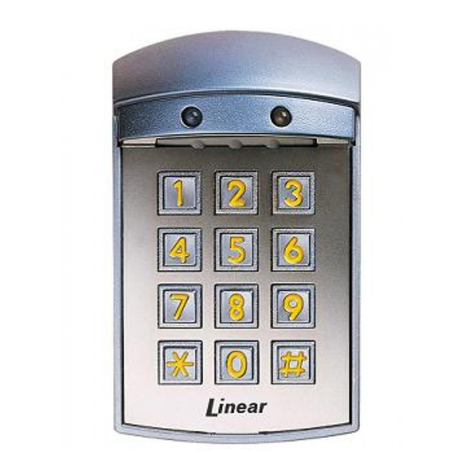
128-6994
6 of 8
The Blue/Red wire provides a pulse ground output when the unlock button of the transmitter is pressed a
second time after disarming. Connect the Blue/Red wire to the wire that provides a low current ground
signal from the factory door unlock switch to the factory door lock control relay.
3 Wire Positive Switched Door Locks
In this application, the green wire provides a positive pulse during disarming, or the pulsed + 12 volt
unlockoutput.Connectthegreenwiretothewirethatprovides a low current positive signal fromthefactory
door unlock switch to the factory door lock control relay.
The blue wire provides a positive pulse during arming, or the pulsed + 12 volt lock output. Connect the
blue wire to the wire that provides a low current positive signal from the factory door lock switch to the
factory door lock control relay.
3 Wire Positive Switched 2 Step Door Locks
The blue wire provides a positive pulse during arming, or the pulsed + 12 volt lock output. Connect the
blue wire to the wire that provides a low current positive signal from the factory door lock switch to the
factory door lock control relay.
The green wire provides a positive pulse during disarming, or the drivers door pulsed positive unlock
output. Connect this wire to the drivers door unlock relay that requires a low current positive signal to
unlock only the drivers door. If the vehicle does not have a separate drivers door relay, one will have to be
added. Locate the drivers door unlock motor wire and cut it at a convenient location to allow wiring of an
optionalrelay. Connect thedoorside of thecutwire to terminal 30ofthe optional relayadded. Connectthe
vehicleside of the cut wireto terminal87a of the optional relayadded. Connect thegreen wire of the 3pin
harness to terminal 86 of the optional relay added. Connect terminal 85 of the optional relay added to
chassisground. Mostvehicles door lock/unlockmotor legs restat ground, andswitch+12 volts tothe door
lock/unlock motor legs for operation, if this is the case in the vehicle you are working on, connect the
remaining terminal, 87, to a fused + 12 volt source. In the rare instance that the vehicle door lock/unlock
motor legs rest at + 12 volts and switches ground to the door lock/unlock motors, connect he remaining
terminal, 87, to chassis ground.
The Blue/Red wire provides a pulse ground output when the unlock button of the transmitter is pressed a
second time after disarming. Because the vehicle you are working on requires a positive pulse from the
factorydoorlock switch to thefactory door lock controlrelay, you willhaveto add a relaytoinvert the output
polarityofthiswire. Connectthe Blue/Red wire toterminal86ofthe optional added relay. Connectterminal
85& 87 toa fuse +12 volt source. Connect terminal30 to thelow current doorunlock wire fromthe factory
door switch to the door unlock control relay.
Resistive Circuits, As Well As 4 Wire Polarity Reversal and 5 Wire Alternating 12 Volt
Door Lock Control Circuits
These applications require the use of additional components which may include relays, fixed resistors, or
forconvenience,theAS 9159 Door LockInterface. Referto the AUDIOVOX DoorLockWiringSupplement
and or the Audiovox fax back service for information on your particular vehicle for properly connecting to
these types of circuits.
COMPLETINGTHE INSTALLATION
NOTE:This unithas the abilitytolearn the domelight delay time, upto 60 seconds.Ifthe vehicle hasdelay
interiorlights, and you wish to avoid three chirp, defect zone, indication normally associated with this type
of interior light, we suggest you learn the interior light delay.
To learn the light delay, start with all doors closed:
(1) Use the transmitter to Lock / Unlock / Lock / Unlock / Lock / Unlock / Lock, the system.
The LED turns on solid to confirm the system entered the learn mode.
(2) Immediately open and close the door of the vehicle to initiate the dome delay.
Theunitwill monitor thedoor trigger input Positive,(Purple), and Negative,(Brown)when active.
When the dome light turns off, the unit will add 2 seconds then exit the learn mode.
(3) The LED will begin flashing theArmed indication indicating the unit has exited the learn mode and is
armed.
Page 6
